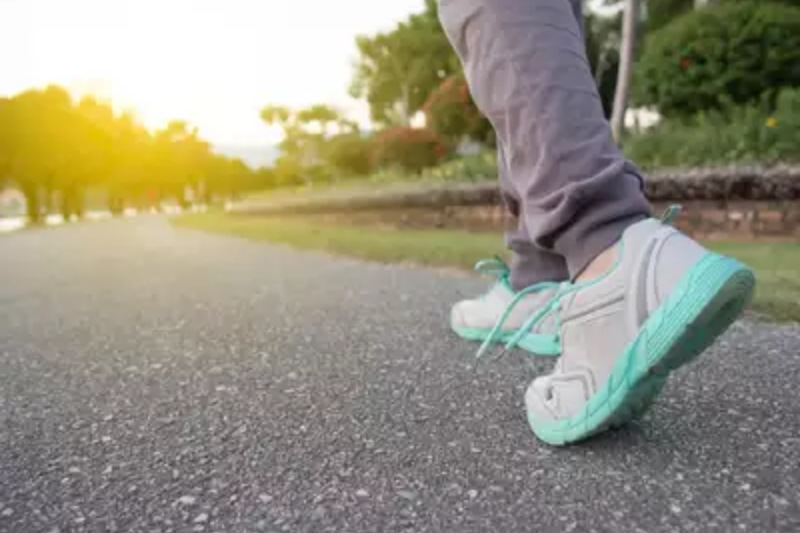How Many Steps Are Actually Necessary?

You adore keeping track of steps. Perhaps this is because we enjoy having objectives, or perhaps it’s just the continual reminder that you have to go if you want to meet your daily aim. Alternatively, it could be that walking is one of the easiest ways to live longer, according to study after study.
You might then wonder, “How many steps is enough?” Is it better to take more steps? According to a recent study in the British Journal of Sports Medicine, walking up to 9,000 steps was more beneficial in preventing diseases like diabetes and heart disease that are made worse by a sedentary lifestyle. However, even 2,200 steps could benefit.
However, concentrating only on the quantity of steps obscures the larger picture. According to recent research, the type of steps you take after a certain point matters just as much as their quantity.
Here are some tips to maximize your daily walk, regardless of whether you’re regularly reaching 10,000 steps or the absolute minimum of 2,200.
Start to Move
Amanda Paluch, a kinesiology professor at the University of Massachusetts Amherst, advised anyone who has broken the practice of walking to just start. Go around the block or turn circles within your home. Check your ability to walk 2,000 steps, or around a mile, and work your way up from there.
Walking at any pace is beneficial to your health if you’re older or have a chronic illness that makes it difficult to get up and move about, according to her.
Step up Your Pace
Counting your steps can be useful at first, but as you hit 6,000 or 8,000 steps a day consistently, you should start paying more attention to your pace.
Walking tightens your muscles, forcing blood from your legs into your heart. This gradually strengthens and increases the functionality of your heart. However, once your heart reaches a particular “stimulus,” which is the same number of steps at the same rate every day, the benefits stop, according to Keith Baar, a professor of molecular exercise physiology at the University of California, Davis.
“To have more of an effect,” he said, “you’re going to need a bigger stimulus.”
He advised pushing oneself by breathing harder and walking more quickly. Increasing the intensity of your walks will strengthen your cardiovascular system rather than increase your calorie burn. Walking more quickly was linked to lower incidences of sleep apnea, acid reflux, diabetes, and hypertension, according to a 2022 study published in the journal Nature.
Start by increasing your pace for 30 or 60 seconds at a time. As you get the ability, lengthen and increase the frequency of such bursts.
Take a Stroll Outside
There is still disagreement over whether going for a stroll outside enhances your physical health (see one 2023 meta-analysis). Dr. Baar contends that while our tendons enable us to walk more effectively on hard ground, walking on soft terrain like sand, gravel, or dirt requires more energy.
He urges people to walk on trails since they tend to have more hills than neighborhood streets and because being in nature has been shown to have positive effects on mental health, regardless of whether it is more difficult.
Move up the Slope
Consider moving upward after accelerating. In a society where time is precious, finding hills to walk up is an excellent approach to increase your fitness level, according to Dr. Sadiya Khan, a volunteer for the American Heart Association and a cardiologist at Northwestern Medicine.
Nearly five miles, the majority of studies—including the most recent British study—show diminishing returns on step counts. To increase the intensity of your workout, walk uphill to maintain a higher heart rate rather than taking 12,000 or 15,000 steps. Additionally, you can walk backwards uphill to increase difficulty and work other muscles. The idea is not to stroll at a moderate pace, but to mix in some strenuous activities.
Carry Weight
If you want to increase the intensity of your walk even more, think about adding weight to your bag. According to Dr. Khan, rucking raises your heart rate and aids in strength training.
However, Dr. Paluch advised anyone considering rucking to take it slowly. Gaining or losing weight might alter your gait and self-image, which could result in harm.
Consider Running
Dr. Khan is frequently asked if it is preferable to run or walk around a track. Although the distance is identical in theory, running is better for your long-term health, according to her.
Start running for 30 seconds or even a minute, then gradually increase those intervals, just like when you started walking more quickly. Furthermore, Dr. Khan stated that the finest daily steps are those you take while exerting a little bit more effort, regardless of whether you want to run.